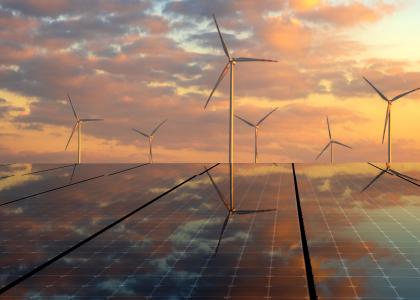Despite the fact that energy efficiency is generally the least-cost option for states looking to comply with the Clean Power Plan, it has yet to be fully considered as a strategy for the Clean Energy Incentive Program (CEIP). This could result in reduced investment in energy efficiency which would mean increased electric costs and less money in the hands of communities. As we’ve shown, it costs significantly less to reduce emissions through energy efficiency than through other means. These savings get passed down to customers, resulting in local job creation and economic development. The Environmental Protection Agency’s latest proposal for the CEIP is an important opportunity to ensure that states can reward investments in energy efficiency while claiming credit for the pollution it avoids. The CEIP early-action program incentivizes renewable energy and energy efficiency serving low-income communities, but as currently drafted, it puts efficiency at an unfair disadvantage. Earlier today ACEEE submitted comments to the EPA that seek to put energy efficiency on a level playing field.
The CEIP is expected to spur early investment in clean energy and provides benefits to low-income communities. In addition to rewarding early investments in energy efficiency and solar projects implemented in low-income communities, the CEIP offers an extra incentive to renewable energy. While we support many elements of EPA’s recent proposal, we are requesting that EPA expand this pool of credits available to renewable energy to also include energy efficiency.
We think this point is so important that we’ve created a letter for sign-on that requests EPA to treat energy efficiency as equal to renewable energy in the CEIP. The exclusion of energy efficiency is a significant oversight that could cause states to opt for more expensive compliance options. We’ve received broad support for this idea from businesses, policymakers, localities, health advocates, environmental groups, and others. Now is the time to show your support and put efficiency on a level playing field in the CEIP. If you would like to add your organization in support of this letter, please contact Aileo Weinmann of Resource Media at aileo@resource-media.org.
ACEEE’s broader comments also recommend an increased incentive for residential efficiency and solar projects implemented in low-income households. We think the current award is not enough to drive the significant investment needed in these communities. Increasing the incentive will help to ensure that residential projects are a major component of the CEIP and that low-income households can directly participate and benefit from this program. We also request that EPA recognize the full benefits of combined heat and power (CHP) installed at critical facilities and other public buildings in low-income communities, and include it as an eligible technology under the CEIP. We support having EPA create a presumptively approvable CEIP plan for states to follow, and request that EPA provide clear guidance to states for evaluation, measurement, and verification (EM&V) to award efficiency savings. You can view a copy of ACEEE’s comments for more detail. With a recent deadline extension to November 1, there is still time to provide comments to EPA. Click here for more details on how to submit your comments.


